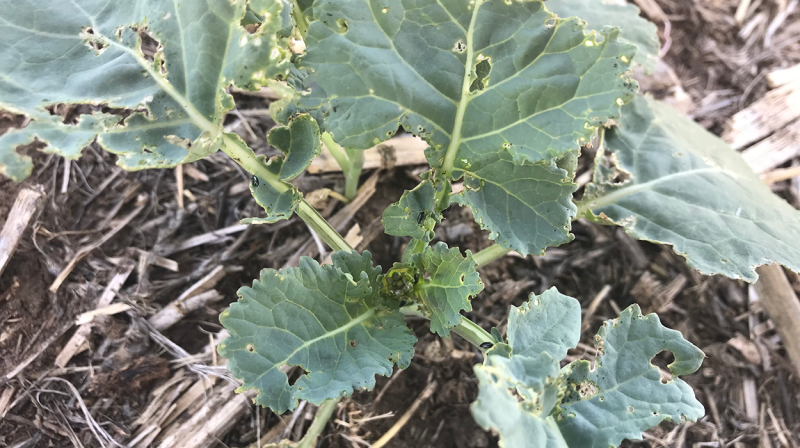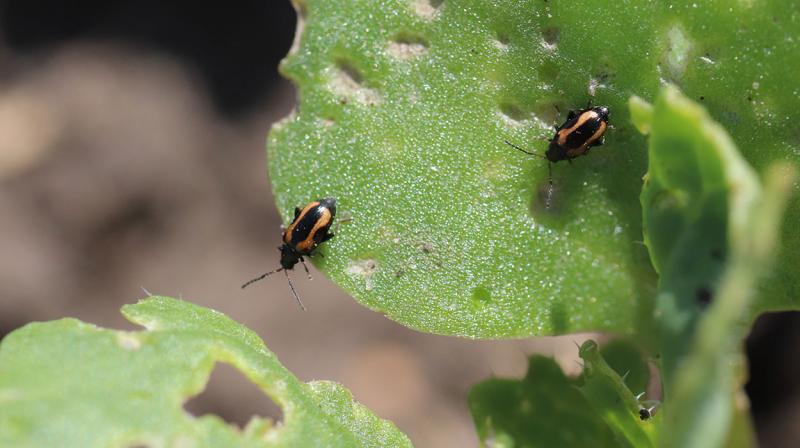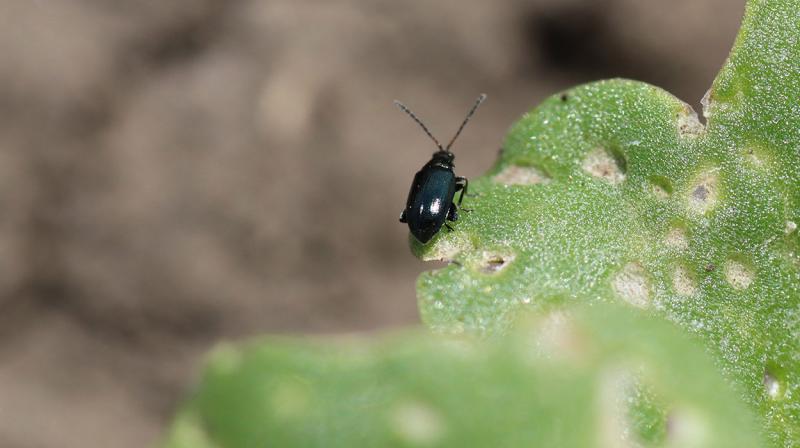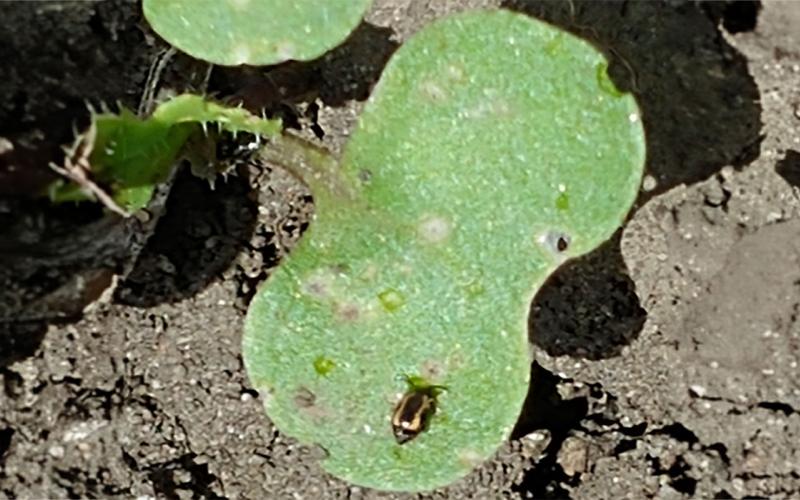
Originally Submitted: June 10, 2021
Large populations of flea beetle adults have been observed on canola this week. In one field we scouted, flea beetle populations were large and causing significant amounts of defoliation (Figure 1).
There are three species of flea beetle that will feed on canola, but we have only been observing the striped flea beetle (Figure 2) and the crucifer flea beetle (Figure 3). Once canola reaches the fourth leaf stage, the impact of defoliation on yield is reduced. The dry conditions in South Dakota will continue to encourage flea beetle activity. Typically, rain that is received this time of year reduces the flea beetle feeding.
Scouting

It is important to remember that flea beetle populations tend to be much higher near field edges. For this reason, the entire field should be scouted to determine how far the infestation goes. In some cases, treatment of the field edge will be sufficient to reduce flea beetle populations.
To scout for flea beetle feeding, walk in a W pattern and evaluate at least five sites per field. At each site, evaluate the defoliation that is present on ten plants (50 plants per field).
Weather conditions can influence flea beetle infestations and their populations tend to be more uniformly distributed during hot, calm days.

If populations persist, additional treatments may be required to reduce the flea beetle populations. Treatment is recommended when an average of 20-25% of defoliation has occurred on the cotyledons, or the first true leaves and flea beetles are still feeding in the field.
If early season management is necessary, foliar insecticides will provide the best reduction in flea beetle populations. Pyrethroid insecticides with the active ingredients of bifenthrin, deltamethrin, gamma-cyhalothrin or zeta-cypermethrin at the high labeled rates provide good management of flea beetles. Make sure to select an insecticide that is labeled for canola and flea beetles.


